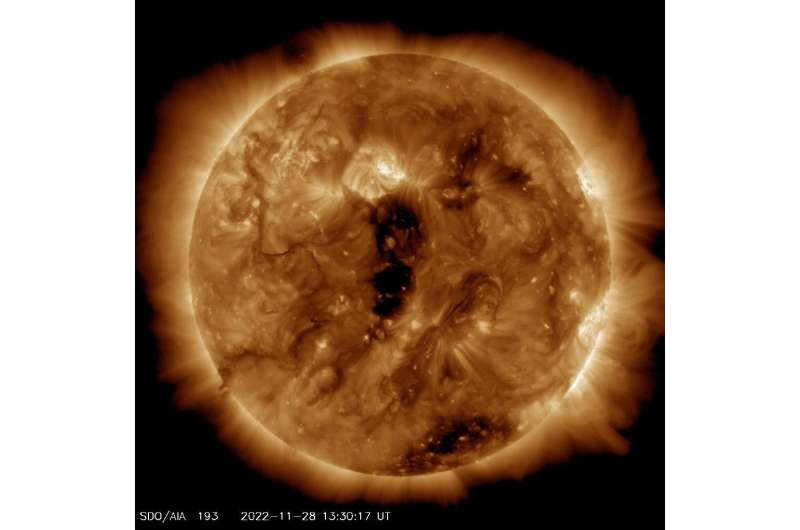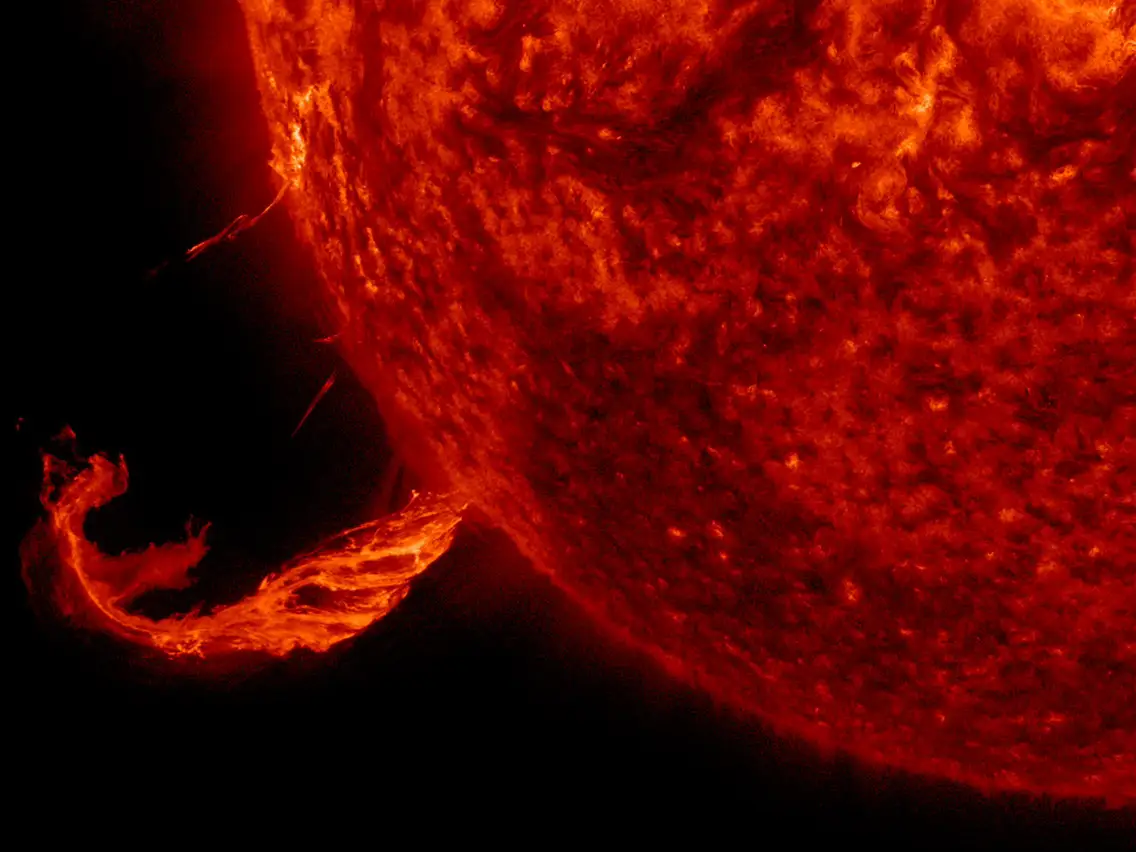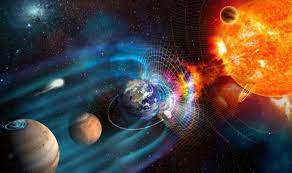
Scientists at the Skolkovo Institute of Science and Technology (Russia), together with colleagues from the Leibniz Institute for Astrophysics (Germany), the University of Graz & the Kanzelhöhe Observatory (Austria), the University of Zagreb and Zagreb Astronomical Observatory (Croatia) have developed a method to predict geomagnetic storms directly from solar observations.
The results make it possible to increase the lead warning times from hours to days and protect the operation of engineering systems in space and on Earth from space weather impact. The study was published in the Monthly Notices of the Royal Astronomical Society.
The solar wind, a stream of electrons, protons, and helium nuclei, permanently blows from the sun, bathing the Earth and all the planets of the Solar System. High-speed solar wind streams originate from coronal holes on the sun—dark regions with low-density plasma in the solar corona, with magnetic field lines freely opening into the interplanetary space, along which the ionized atoms and electrons escape into interplanetary space, leaving a “hole” in the corona.

When the fast solar wind catches up and collides with the denser slow solar wind, which is generated by the “calm” part of the solar corona, it leads to the formation of a giant structure called a corotating interaction region, which rotates with the sun. Reaching the Earth’s orbit within a few days, it can cause geomagnetic storms and auroras. And since a coronal hole can reappear in front of us in one solar rotation, the fast solar wind from the coronal hole can cause recurrent geomagnetic storms and auroras, repeating every 27 days.
The propagation time of solar wind from the sun to Earth is roughly between one and five days, which creates a natural lead time for early warning. However, the magnetic structure of an interplanetary perturbation, in particular the southward component of the interplanetary magnetic field, driving the storm, cannot be determined for now from solar observations, which strongly limits the possibility of forecasting a storm several days in advance.
Current approaches to geomagnetic storm predictions are mainly limited by a short-term forecast with a lead time of hours, based on measurements of the solar wind and interplanetary magnetic field at the Lagrangian point L1 close to Earth.

An international group of scientists addressed a very important question for space weather applications—whether the geomagnetic storms induced by high-speed solar wind streams can be predicted directly from solar observations—and presented a novel and successful effort for geomagnetic storm forecasting using information from coronal holes on the sun.
The results allow the prediction lead times to be extended from hours to days, which is highly important for warnings of the space weather conditions in the near-Earth environment and other space weather applications.
“We established empirical relations between coronal hole areas on the sun derived from satellite images and the solar wind speed at the L1; between remote-sensing magnetic field maps of the solar photosphere and in-situ measurements at L1; and also between coronal hole areas, the corresponding magnetic field at sun, and geomagnetic indices,” says the study’s first author, Simona Nitti, a Skoltech MSc graduate, who is currently pursuing her Ph.D. studies at the University of Leicester in the United Kingdom.
“We showed that the magnetic field from a coronal hole propagating from sun to Earth is preserved in more than 80% of the cases. This opens a possibility to use the magnetic field derived from solar observations instead of that at L1. Additionally, to improve the predictions, we incorporated into the forecasting model of the geomagnetic activity the seasonal variations of the southward component of the interplanetary magnetic field.”
“Our study represents a big step in modeling geomagnetic activity and in interpretation of the observed variations in geomagnetic activity indices. We have considered the southward-pointing interplanetary magnetic field (IMF) to be an important driver of geomagnetic activity. As this magnetic field component, Bs, when separated by the IMF polarity shows a pair of spectacles pattern: when the IMF points toward/away from the sun the field is enhanced in spring/fall and reduced in fall/spring, we incorporated this form in our prediction model. Since we have used the information about the coronal holes and each coronal hole has a certain polarity, it was essential to use the proper pattern of Bs for a given polarity,” says Dr. Mario Bandić, research co-author.
“In this way we have broken the common practice of interpreting the variations seen in geomagnetic indices as ‘Russell-McPherron effect’ and have considered the forms of Bs separated by the polarity that are revealed by satellite data. The polarity fields from the Russell-McPherron model of Bs are undefined for half of the year: for IMF pointing toward the sun Bs is zero in the fall and for IMF pointing away from the sun Bs is zero in the spring. Taking the realistic forms of the polarity fields as an input has enabled us to obtain a quite accurate and reliable prediction model.”
“The strength of a geomagnetic storm is determined by the properties of the solar wind as well as by the ‘frozen-in’ solar magnetic field dragged by the solar wind to the interplanetary space. However, the solar wind, as any wind, is capricious and unstable, which makes it challenging to predict its properties,” says Tatiana Podladchikova, associate professor at the Skoltech Center for Digital Engineering, research co-author.
“Our approach based on using information from solar coronal holes opens a new chapter in geomagnetic storm prediction directly from solar observations extending forecast lead times from hours to days, which is of prime importance for the protection of the space- and ground-based infrastructures and advance of space exploration. And whatever storms may rage, we wish everyone good weather in space.”








